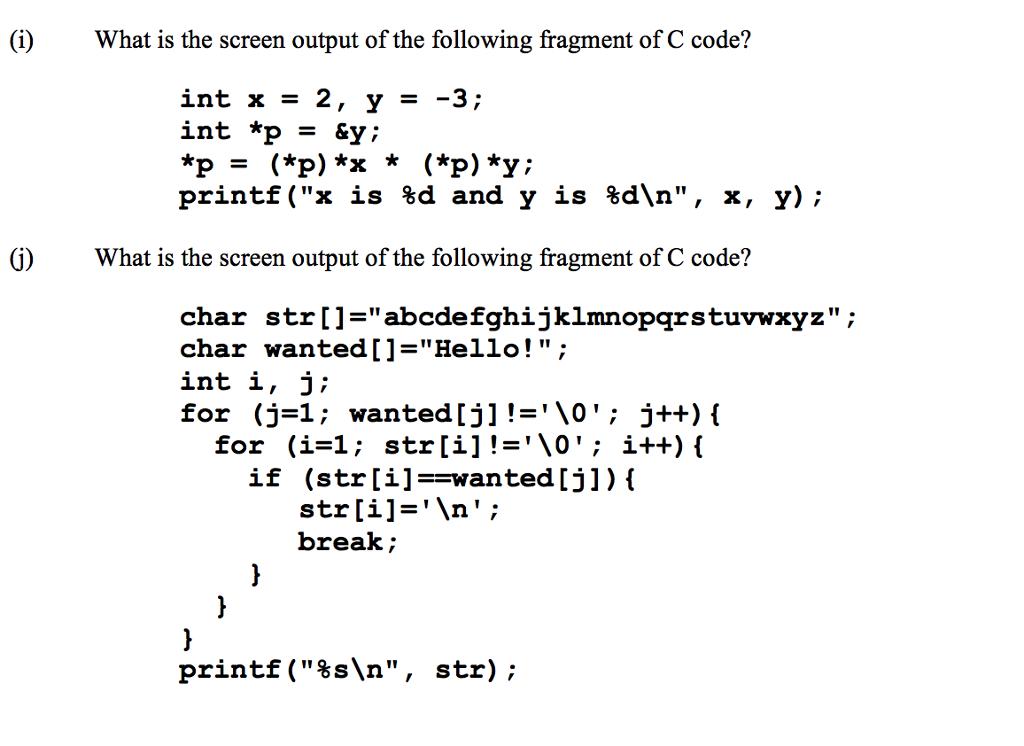Question
(j) What is the screen output of the following fragment of C code? -3; int x = 2, Y = int *p=&y; *p: (*p)

(j) What is the screen output of the following fragment of C code? -3; int x = 2, Y = int *p=&y; *p: (*p) *x* (*p) *y; printf("x is %d and y is %d ", x, y); What is the screen output of the following fragment of C code? char char wanted []="Hello!"; int i, j; for (j=1; wanted [j] != '\0'; j++){ for (i=1; str[i] != '\0'; i++) { if (str[i]==wanted [j]) { str[i]=' '; break; } } } str[]="abcdefghijklmnopqrstuvwxyz"; printf("%s ", str);
Step by Step Solution
There are 3 Steps involved in it
Step: 1
Answer Lets analyze each fragment of the C code For the first fragm...
Get Instant Access to Expert-Tailored Solutions
See step-by-step solutions with expert insights and AI powered tools for academic success
Step: 2

Step: 3

Ace Your Homework with AI
Get the answers you need in no time with our AI-driven, step-by-step assistance
Get StartedRecommended Textbook for
Modern Classical Physics Optics Fluids Plasmas Elasticity Relativity And Statistical Physics
Authors: Kip S. Thorne, Roger D. Blandford
1st Edition
0691159025, 978-0691159027
Students also viewed these Programming questions
Question
Answered: 1 week ago
Question
Answered: 1 week ago
Question
Answered: 1 week ago
Question
Answered: 1 week ago
Question
Answered: 1 week ago
Question
Answered: 1 week ago
Question
Answered: 1 week ago
Question
Answered: 1 week ago
Question
Answered: 1 week ago
Question
Answered: 1 week ago
Question
Answered: 1 week ago
Question
Answered: 1 week ago
Question
Answered: 1 week ago
Question
Answered: 1 week ago
Question
Answered: 1 week ago
Question
Answered: 1 week ago
Question
Answered: 1 week ago
Question
Answered: 1 week ago
Question
Answered: 1 week ago
Question
Answered: 1 week ago
Question
Answered: 1 week ago
Question
Answered: 1 week ago
Question
Answered: 1 week ago
View Answer in SolutionInn App



